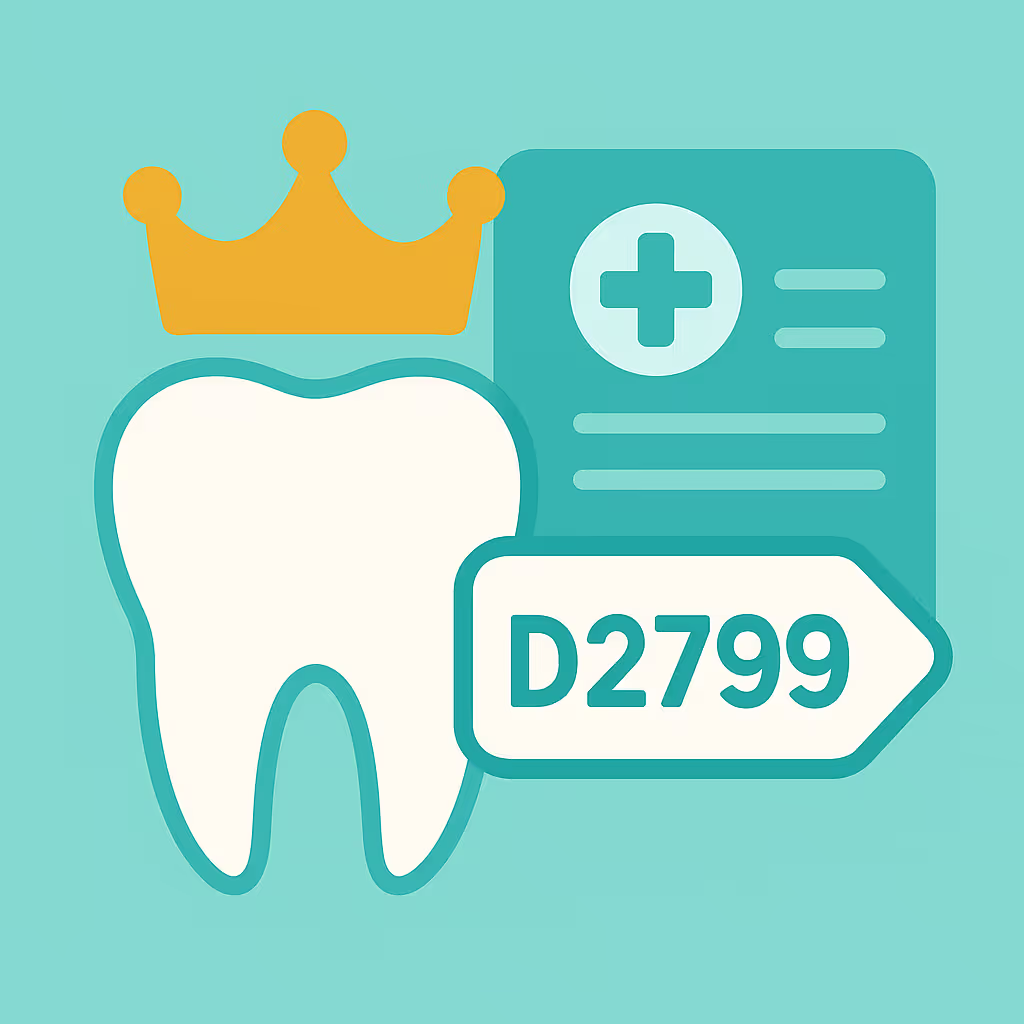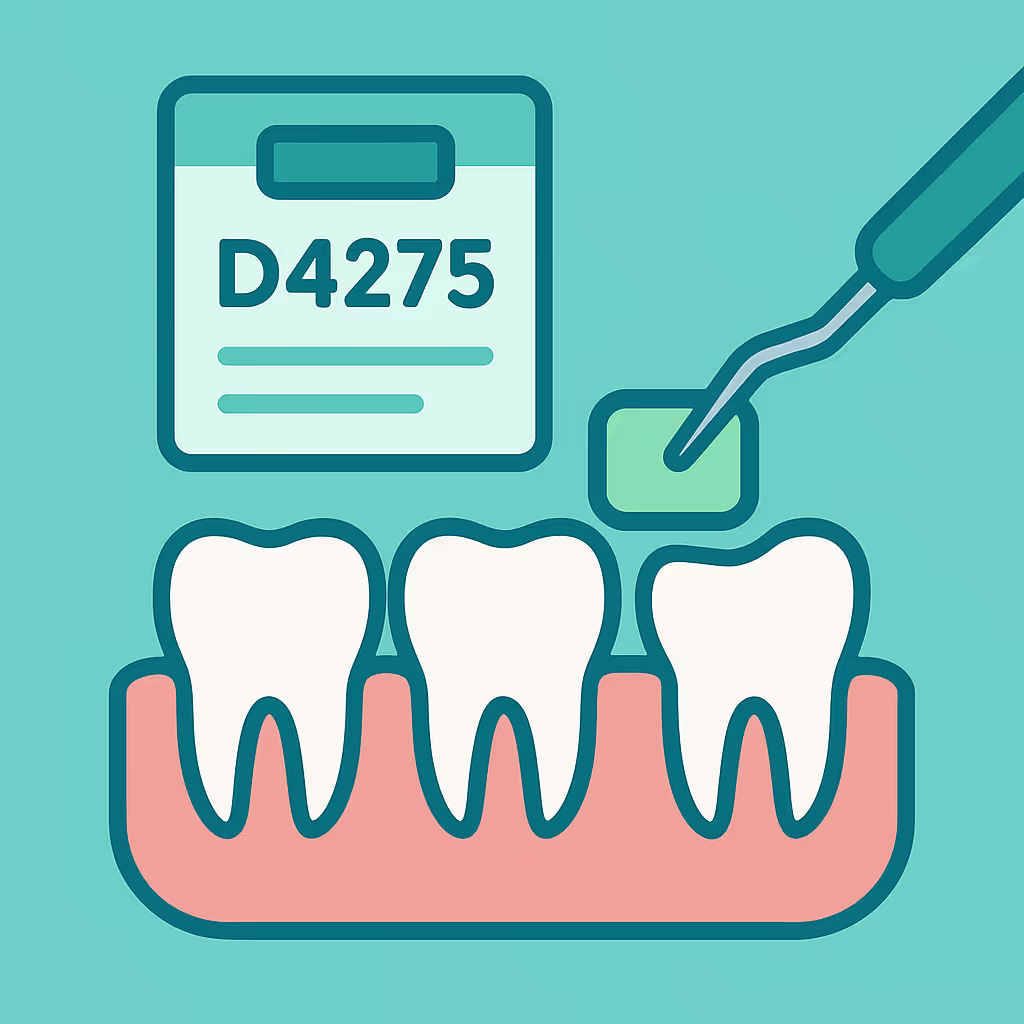Understanding Dental Code D7858
When to Use D7858 dental code
The D7858 dental code is designated for joint reconstruction procedures involving the temporomandibular joint (TMJ). This CDT code should be used when a patient requires surgical intervention to restore or replace the structure of the TMJ due to trauma, congenital anomalies, degenerative disease, or failed previous treatments. It is essential to distinguish D7858 from other TMJ-related codes, such as D7865 (arthroplasty), as D7858 specifically covers reconstruction, not just repair or disc repositioning.
Documentation and Clinical Scenarios
Proper documentation is critical when billing for D7858. Dental teams should ensure that the patient’s clinical records include:
- Detailed diagnosis and medical necessity for joint reconstruction
- Preoperative imaging (CT, MRI, or panoramic radiographs) demonstrating joint pathology
- Comprehensive treatment plan outlining the surgical approach and materials used
- Operative report with step-by-step details of the procedure
- Postoperative notes and follow-up care instructions
Common clinical scenarios include severe TMJ degeneration, ankylosis, traumatic injury, or failed previous TMJ surgeries. Always ensure that the documentation clearly supports the need for reconstruction, as insurance carriers will scrutinize these claims closely.
Insurance Billing Tips
Billing for D7858 requires a proactive and detail-oriented approach. Here are best practices used by successful dental offices:
- Insurance Verification: Before treatment, verify the patient’s benefits for major oral surgery and TMJ procedures. Many plans require preauthorization for D7858.
- Preauthorization: Submit a comprehensive preauthorization package, including clinical notes, diagnostic images, and a narrative explaining the necessity for joint reconstruction.
- Claim Submission: Use the correct CDT code (D7858) and attach all supporting documentation. Clearly indicate the surgical site and materials used.
- Explanation of Benefits (EOB) Review: After claim submission, monitor the EOB for payment details or denial reasons. If denied, review the rationale and prepare a timely claim appeal with additional supporting evidence if needed.
- Accounts Receivable (AR) Follow-Up: Track outstanding claims and follow up with payers regularly to ensure prompt reimbursement.
Accurate coding and thorough documentation are your best defense against denials and delays in payment for complex surgical procedures like D7858.
Example Case for D7858
Consider a patient presenting with chronic pain, limited jaw movement, and a history of failed TMJ arthroplasty. Imaging reveals severe joint degeneration and ankylosis. After conservative treatments fail, the oral surgeon recommends total joint reconstruction using a prosthetic device. The dental office:
- Collects all clinical records and imaging
- Submits a preauthorization request with a detailed narrative
- Receives approval and schedules surgery
- Performs the procedure and documents every step
- Submits the claim with D7858, including operative and follow-up notes
- Monitors the EOB and follows up with the payer until payment is received
This step-by-step workflow ensures compliance, maximizes reimbursement, and supports optimal patient care for complex TMJ cases requiring joint reconstruction.





